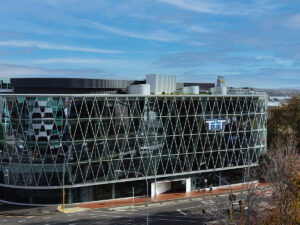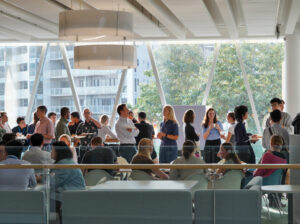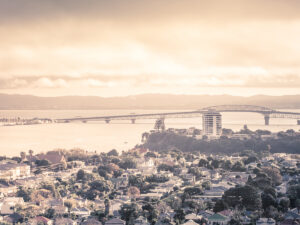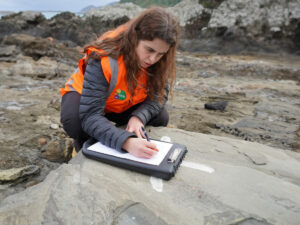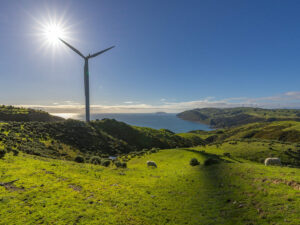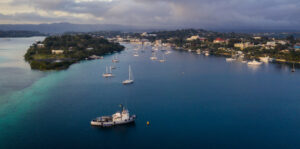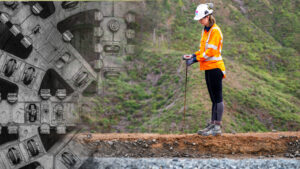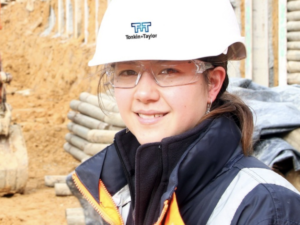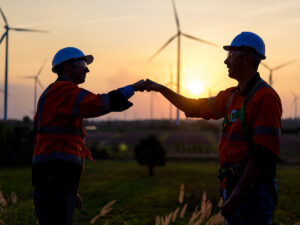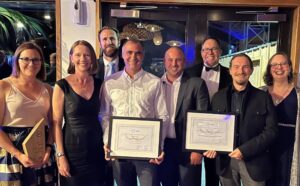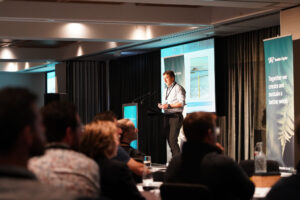Insights from the Climate Change Business Conference.
As we explore what climate resilience means for Aotearoa, our skills in moderating and communicating an impactful conversation on climate resilience become paramount for meaningful adaptation. Tonkin + Taylor’s Principal Consultant – Climate Risk and Resilience, Paddy Pringle recently moderated a panel discussion on building climate resilience at the Climate Change and Business Conference (CCBC), hosted by the Sustainability Council and Climate Leaders Coalition.
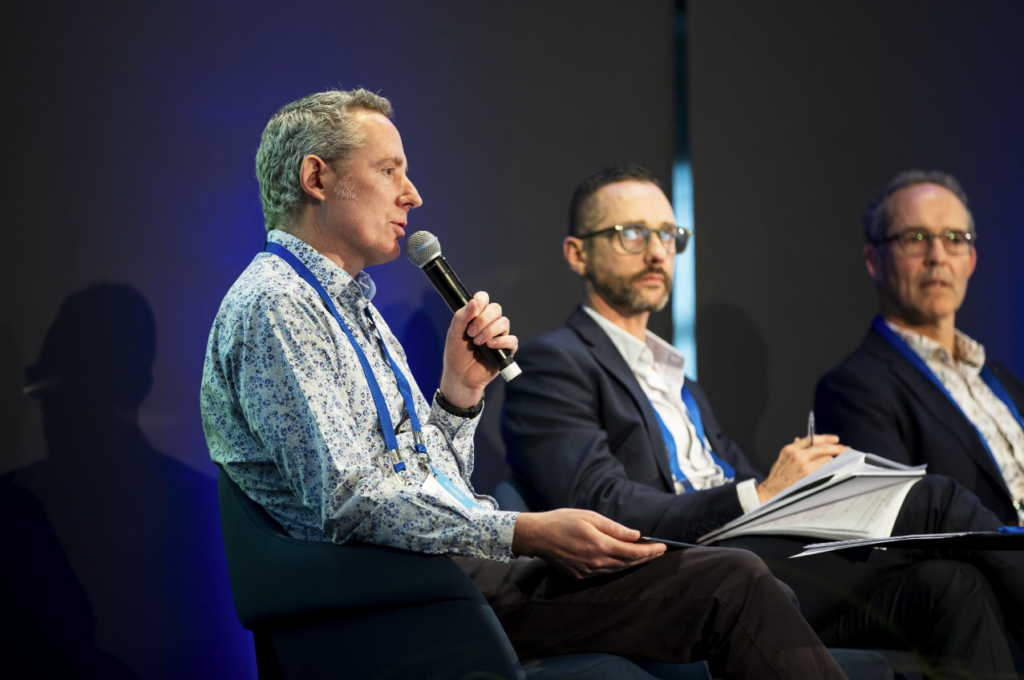
Paddy has worked in the Climate Change and Resilience Sector for 15 years. As the director of the UK Climate Impacts Programme (UKCIP), Paddy oversaw work across international science and climate policy, leading to a passion for developing solutions for organisations to understand and mitigate their climate risks. We asked Paddy for his reflections from the Climate Change and Business Conference and explored how we can build on climate resilience in Aotearoa, New Zealand.
Key Takeaways from the Building Climate Resilience Panel
A CCBC panel session, moderated by Paddy, explored what recent extreme climate events in NZ can tell us our adaptation responses, including how we can best communicate and increase the adoption of resilience actions at local, business, and government levels to set the foundations for a climate-resilient, adaptive nation.
Sarah Anderson, Program Director at Climate Connect Aotearoa, shared a key insight from the panel, highlighting the often-overlooked importance of small-to-medium enterprises (SME’s) in building lasting climate resilience. Effective engagement with SMEs is critical to addressing this disparity alongside offering tools which are catered to their specific needs and constraints.
The idea of embedded resilience was prominent throughout the panel discussion, including ensuring continued access to services during a crisis. In response to audience questions, the panel discussed the maintenance of services levels in response to both slow onset and extreme events and whether risk acceptance and supporting communities to cope with reduced service was in fact a critical aspect of being adaptive. Communities may need to be provided with education and tools to manage with reduced services during extreme events alongside efforts to build adaptive future-focused infrastructures in areas that face less risk of extreme damage.
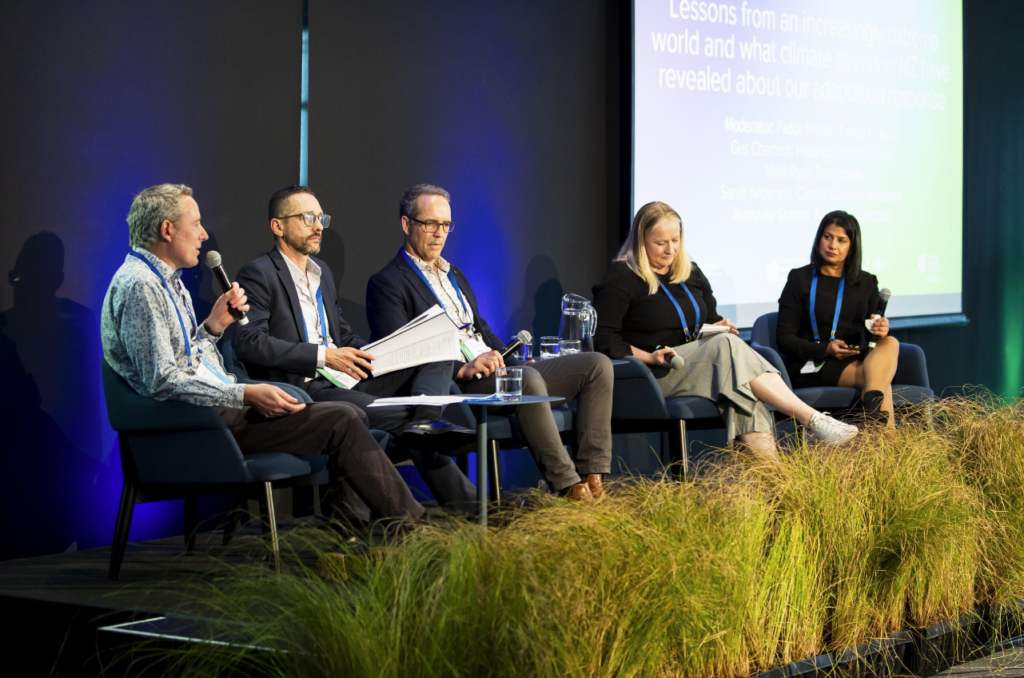
The panel explored the importance of bringing together local communities and engaging in transparent communication, by both scientists and community leaders to increase local resilience, allowing us to better explore robust long-term adaptation which responds accounts for how communities live and operate in their daily lives.
What does Climate Resilience look like in practice?
“Climate resilience is understanding what the future could bring and developing strategies and capacities that respond to it,” says Paddy. “There are many ways we can develop innovative responses that can actively involve communities and businesses. These must address the immediate impacts of extreme events while providing long-term future benefits. We need to start thinking in terms of creating better spaces and places in a changing climate rather than simply seeking to address hazards. Solutions can include making space for water and biodiversity which in turn can reduce flood risk and creative public amenities; it is about rethinking our relationships with nature and land.
“We cannot prevent climate extremes from happening and we cannot afford to keep replacing what is broken, we must plan and adapt with resilient systems,” says Paddy. “With dynamic planning, communities can respond to changing climate conditions in innovative, adaptable ways. Considering pragmatic solutions that yield long-term positive effects allows us to develop healthier spaces in our ever-changing climate.”
To improve our resilience, and give it meaning to communities, science needs to be understood and translated into language and frameworks that resonate with communities and organisations. This facilitates an improved understanding of potential implications, actions required, and suitable timelines for climate-resilient strategies. Resilience is not merely about infrastructure and land use but also about preserving and fostering adaptive and resilient mindsets.
Short term response v Long-term Adaptation
At the Climate Resilience Panel at CCBC Gus Charteris, Manager of Cyclone recovery for Hastings District Council, highlighted a key consideration in our ‘emergency response: the importance of balancing short-term recovery and long-term adaptation at the same time.’
For adaptation practitioners this means responding to the immediate needs of communities on the ground allowing them to get back on their feet, whilst having an adaptive plan in place for the long term.
In 2022, cyclones caused widespread damage across Aotearoa, highlighting the importance of two key responses: immediate recovery and resilient adaptation. Aligning immediate recovery with robust adaptation plans makes it more likely that when future events occur, we are prepared for the long term. Effective planning highlights the crucial role of community and mana whenua engagement, as it allows us to gain deeper insights into what it truly means to live in a specific region or place, rather than addressing isolated problems. Aotearoa can harness the strength of our communities and their ways of operating to take a more holistic, future-focused approach.

Building climate resilience is a complex yet critical mission, bridging the often-daunting gap between science and action. An openness to learning, innovating, and directly engaging with businesses and communities, is key to driving success on our collective journey towards a more resilient future.
To read more on addressing climate change and climate adaptation in Aotearoa Click here


